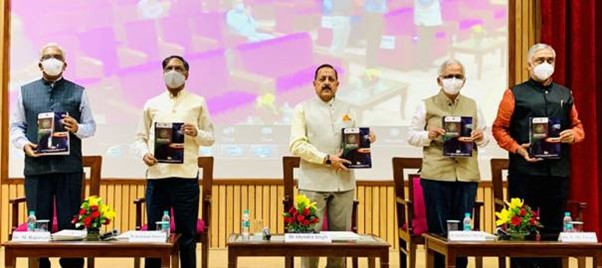Union Minister of State (Independent Charge) Science & Technology; and Earth Sciences; Dr Jitendra Singh said India is going to have 35 more earthquake observatories by end of this year and 100 more in the next five years. He pointed out that in the last six and a half decades since Independence, the country had only 115 observatories but now there is going to be a quantum leap in the number of observatories in the country. He was speaking at the inaugural ceremony of the joint scientific assembly of the International Association of Geomagnetism and Aeronomy (IAGA) – International Association of Seismology and Physics of the Earth’s Interior (IASPEI).
Dr. Singh observed that the Indian subcontinent is one of the world’s most disaster-prone areas in terms of earthquakes, landslides, cyclones, floods, and tsunamis. The importance of Geology as a recognized science of the composition, structure, and processes, which govern our planet, has probably reached its zenith as human society grapples with challenges at multiple levels of interactions with Mother Earth.
The Minister expressed hope that the joint scientific will act as a catalyst in bringing on board a greater number of researchers and practitioners from the global community to work on issues related to rendering science to society. The Minister said the linkage between the deep earth structure and geomagnetism, and the role of fluids in earthquake nucleation are a few examples to emphasize the significance of the joint scientific assembly.
Dr. Jitendra Singh expressed hope that organizing such a joint scientific assembly in India would foster new enthusiasm in young researchers and enable them to forge collaborations and construct cross-disciplinary science proposals, the outcomes of which will help us to move into the future with a better understanding of our planet, armed with new scientific solutions. He also wished that a series of successful deliberations during this Joint Scientific Assembly of IAGA-IASPEI would provide a new dimension for a better understanding of Earth System Science.
He impressed upon India’s commitment to supporting various projects of earth system science to quantify the seismic hazard for better land use and urban planning and creating disaster-resilient infrastructures for reducing risks and ultimately paving the way to sustainable development.
The Minister expressed hope that the Joint Scientific Assembly of International Association of Geomagnetism and Aeronomy (IAGA) – International Association of Seismology and Physics of the Earth’s Interior (IASPEI) will act as a catalyst in bringing on board a greater number of researchers and practitioners from the global community to work on issues related to rendering science to society.


























